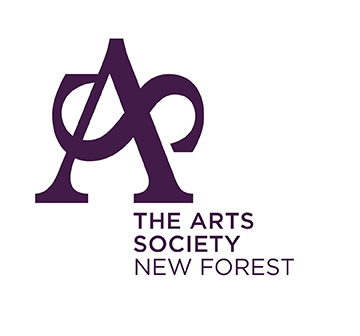Amadeo Modigliani and Bohemian Paris. 1906-1920. A lecture by Julian Halsby May 2023
Julian introduced us to Modigliani by saying that the phrase that best sums the artist up is ‘taking a walk on the wildside.’
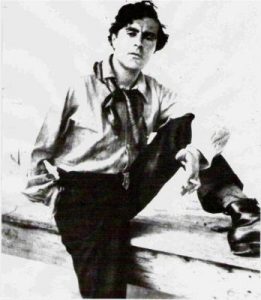
Modigliani, he told us, was very good looking and was full of ideas about art and literature and left a fantastic legacy when he died at the very young age of 35. He considered himself a total failure and died in a cold flat in Paris eating sardines out of a tin! His whole life was full of tragedy yet he was incredibly sought after.
He was born into a Jewish family 1884 in Livorno in Italy. As a child he would sit and paint all day. Then when he became older he would go around museums studying the art and learning from what he saw. – he was particularly inspired by Botticelli. He also loved the rich colours of the Venetian painters – such as Bellini. In 1906 his mother allowed him to go to Paris where he lived a Bohemian life.
He went to the cabaret at ‘Le Lapin Agile’ in Montmartre where he met fellow artists such as Picasso and Andre Gill (who had created the original name of the cabaret-Le Lapin a Gill) and Toulouse Lautrec. 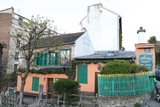
At the Lapin he fell into bad company – meeting up with Utrillo and his life became full of drinking and drugs.
In his whole life Modigliani only painted 3 landscapes – one of which was ‘The Tuscan Road ‘ 1899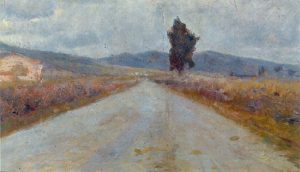
Modigliani’s intention was to be a sculpture rather than a painter but the dust gave him health problems.
In 1909 he painted Dr. Paul Alexandre and again in 1911.

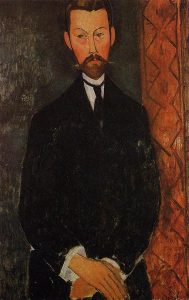 (note the beauty with which he applies paint and colour. )
(note the beauty with which he applies paint and colour. )
He became obsessed with Cezanne as shown in ‘The Cellist’
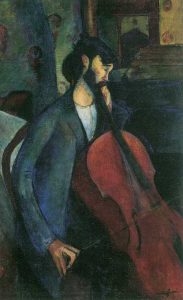
Modigliani also studied masks from countries such as Egypt and Cambodia which he saw in the museums in Paris and their influence can be seen in his sculptures and paintings.
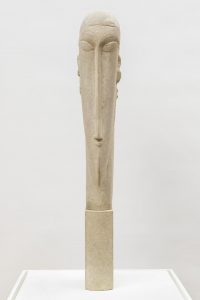
Women and affairs played an important role in his life – he met and fell in love with the Russian poet Anna Akhmatova in 1910 and in all made 16 drawings of her. 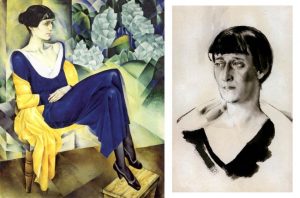
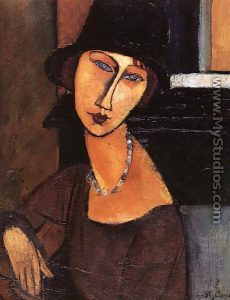

In 1910 the group of artists moved from Montmartre to Montparnasse as Montmartre was becoming too popular. Modigliani would wander round the cafes selling his paintings.
He had a studio at La Ruche ( so called because it looked like a beehive) along with other poverty stricken artists and a variety of down and outs and drunks. ) 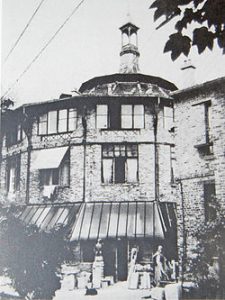
He recorded the people who were around at the time such as his friend Max Jacob He painted ceaselessly (one painting would take him one day) 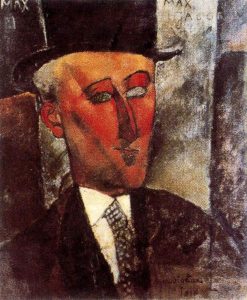
For the Bohemians the essence was ‘poverty, poverty, poverty.’ They were very left wing and supported revolution.
At this time in his life he was very much involved in the Parisian night life – Paris was a very exciting place to be.
In 1916 he painted Picasso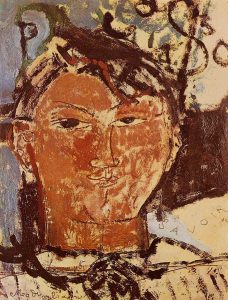
and in 1918 Picasso bought Modigliani’s painting ‘ Girl with a Black Hat ‘
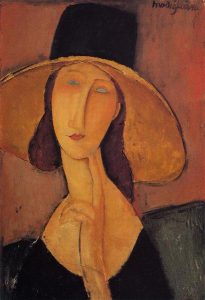
Modigliani was so skilled at capturing the real character and likeness of the subject – as can be seen in his paintings of Diego Rivera in 1914 and 1916.
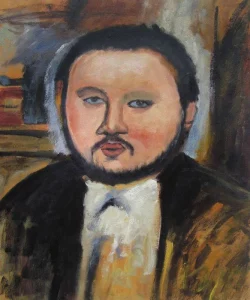
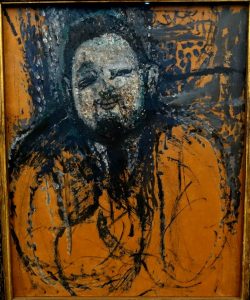
And his painting of Jean Cocteau shows how effete and elegant he was 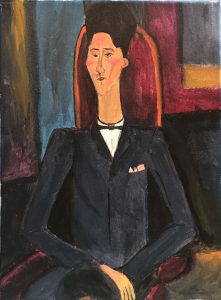
and the toughness of Renee Kisling is clearly shown in this painting by Modigliani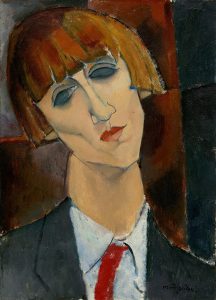
Madame Pompadour – Beatrice Hastings – who was his lover sat for many of his paintings showing differing styles and attitudes and how Modigliani painted faces like masks
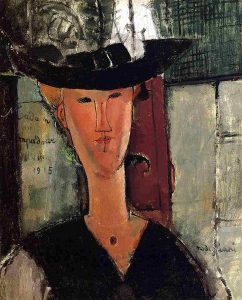
Paul Guillaume – (note the one eye open and one eye closed.) was an art dealer who Modigliani thought was going to be the person who would make him famous but it was not to be.
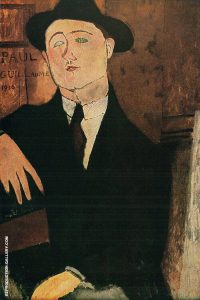
A while later a one man show of Modigliani ‘s work- his paintings of nudes – was again a moment when he thought this would led to his greater recognition. Unfortunately it was set up in a Gallery which was opposite a Police station and as a result it was closed immediately!
His paintings of nudes were never full length, he cuts them off and gets closer and looking at them from above so they are more intimate. As in ‘Nude on a Blue Cushion’
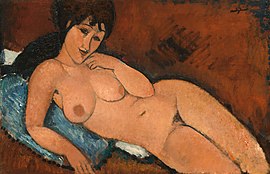
They look simple and sweet and repetitive but they are most certainly not.
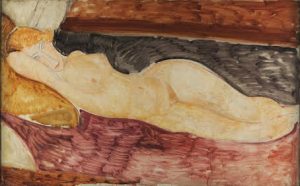
Nude with Reclining arms 1917
Modigliani uses loose handling of paint and line.
In 1917 Modigliani meets the last and most important love of his life – Jeanne Hebuterne and she moved in with him despite her parents’ total disapproval. 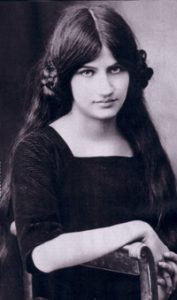
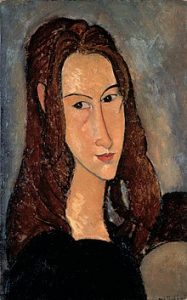
In this painting Modigliani did of her we can clearly see how superbly he captures the character and expressions of his subjects
They moved to Nice in search of warmer weather and their daughter Jeanne was born in 1918 but Modigliani’s health was deteriorating and he was too ill even to attend his exhibition in 1919.
Whist in Nice he painted ‘Le Petit Paysan ‘ in the room where he also painted Jeanne.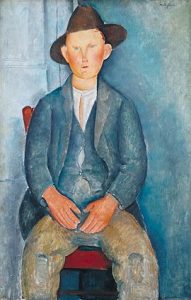
He died in 1920 when Jeanne was expecting their second child and her grief was so great she threw herself out of their bedroom window killing herself and the unborn child.
Julian concluded this fascinating lecture by emphasising what a supreme draftsman and colourist Modigliani was and how he had a pure love of beauty and longed for crystalline purity which he conveyed to us with his paintings, and which Julian had most certainly made us so aware in his lecture.
I am sure that we all learned so much more about Modigliani and his art and his skill at showing his subject’s character in what on the surface seems to be a rather simple painting. Thank you Julian –
